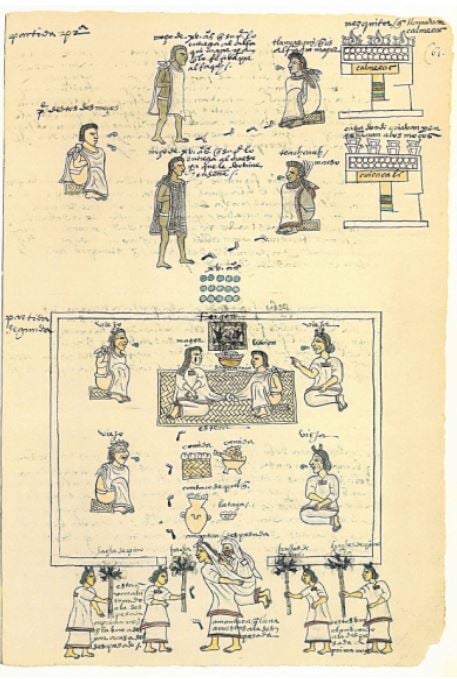Everyday is a great day to enjoy the company of tequila. Apart from lime and salt, you can also savor this Mexican drink with some laughter from these funny memes found in the internet today:

And the personal favorite:
Indeed, tequila may stir a few of our funny bones by their inspired memes, sayings, and quotes. Apart from memes, quotes, and sayings, tequila is also able to tell a story about its humble beginnings.
Interested in attending a tequila event? Join us on our Tequila Tastinga and save 20% with code DWF (drink with friends). Click below and select your city!
Historia del Tequila
Evidence in archaeology suggests that the agave plant was a major part of the indigenous Aztec culture. As early as the 16th century, the Aztecs fermented agave sap to produce pulque, a beer-like drink for ceremonial and religious purposes and festivities.
Mesoamerican Era:
Imbibing of the pulque was to be done only by certain people as it was considered sacred, and its use was limited to certain classes of people. Aztec priests drank pulque to improve their enthusiasm. They also gave this ritualistic drink to ease their sacrificial victims’ suffering.
However, there are also a variety of Aztec codices that point out the pulque’s usage. The Borbonicus Codex, for example, shows that priests and the nobility can drink pulque to celebrate their victories. The Codex Mendoza (below), a manuscript that dated back in the 16th century, shows Aztec elders and this religious drink in a vessel. Aztecs also consumed pulque under certain conditions such as festivals for the goddess Mayahuel and the god Mixcoatl.

Spanish Occupation
By the time Spanish conquistadores had set foot on Aztec shores, they had already ran out of their favorite brandy. They then started to experiment and distill agave to produce something close to what we now recognize as tequila, according to WikiPedia’s article on Tequila.
Sign up for future tequila events and get access to our event discounts! Click below.

17th to 19th Century
Fast forward to 1600. This era was noted for its ban of planting new vineyards due to the decline of Spain’s wine trade. Philip II, the King of Spain at that time, gave this decree to help sustain the market for Spanish goods, as well as, to get taxes on wine exports.
However, Don Pedro Sánchez de Tagle, the second Marquis of Altamira, saw this as an opportunity and started to produce tequila and sold it locally in his first Tequila factory in Hacienda Cuisillos, which is dubbed to be the world’s first Tequila distillery. The Marquis is now known today as the "Father of Tequila".
It was around 1700 and 1800s that tequila started to roll and make its way around the world. Don Jose Antonio de Cuervo (founder of Jose Cuervo tequila) was given a land grant by the King of Spain then, Ferdinand VI, in the town of Tequila, Jalisco. Here is where he would grow and harvest the blue agave plant (agave Tequilana), a water-retaining plant native to Central Mexico that is distilled to create Tequila.
Jose María Guadalupe de Cuervo, Don Jose Antonio de Cuervo's son, ushered in the birth of the modern Tequila industry. He was the first one to produce their tequila commercially in bottles while the competition had them in barrels.
The first tequila maker to export their goods to the US was Don Cenobio Sauza (founder of the same Sauza Tequila we know today). Don Francisco Javier, Don Cenobio’s grandson, was responsible for identifying the agave tequilana as the best plant for producing tequila which led the international circles to recognize that real tequila can come only from Jalisco.
Today
From the 20th century to today, the love for tequila keeps growing stronger and stronger, as it gains more fame and awards internationally. Bars and tequila enthusiasts everywhere have created a variety of cocktails out of this awesome spirit: Tequila Sunrise, Bloody Maria, and Margarita,just to name a few. Chefs have also incorporate tequila to give food more character. Read about it in our articles Delicious Recipes Using Tequila and Healthy Recipes With Tequila.
Interested in attending a tequila event? Join us on our Tequila Tastinga and save 20% with code DWF (drink with friends). Click below and select your city!
Types of Tequila
There are hundreds of brands of Tequila out there, each having their own distinct, delectable taste. If you aim to be a tequila lover, knowing these varieties of Tequila can be truly helpful.
Tequila has 2 Categories
Tequila is divided into two categories, Mixto and 100% Blue Agave. One must remember that there are strict rules on labeling that help the drinkers identify the kind of the spirit, place of production, and number of years it was aged (if any).
- Mixto
Mixto, or mixed, is the first category in tequila. You can determine if the tequila is mixed based on its label. If it only says “Tequila”, you can bet it is mixed -- at least 51% agave and the other 49% is fructose and glucose sugars (some with glycerine, synthetic flavoring, and coloring according to tequila.net!). This is a sure mix for a nasty hangover.
- 100% Blue Agave
This category, however, is another story.
You’d know if it is truly a full blue tequila if the taste has a stronger, bolder flavor, with more body compared to mixto. Also, to check if the tequila you hold in your hand is a 100% blue tequila, is through its label. It should say “100% Blue Agave”
From these 2 categories, tequila is then sub-divided into 5 varieties namely: blanco, joven, reposado, añejo, and extra añejo.
Blanco
The tequila blanco, also known as tequila plata or silver, is bottled straight from the distillation process. Some age it for less than 2 months to increase its smoothness or “suave”-ness. If you want a strong, clean taste of agave, then this one is right for you. Great examples for these are Tequila Don Julio Blanco and Cimarron Blanco Tequila (if you are on a tight budget).
Joven
Also known as Tequila gold or oro, tequila joven or abocado is actually a mixto. It is a mix between tequila blanco and added ingredients like coloring, glucose, and flavor extracts. With beautiful gold color, it is slightly sweet and caramel like. It is this variety of tequila that you can find in the shelves of bars and stores. Try these tequila joven: Casa Dragones Tequila Joven and Alce Negro Tequila Joven Black.
Reposado
This tequila is known as the “rested” and “aged” tequila and represents the first level of aging. This is a tequila blanco that has been aged in wood casks and stored between 2 months to a year. When it comes out, it has that slightly tinge of gold color with a taste of agave, as well as inheriting the taste of the wood cask that it was stored in. Examples: 1921 Tequila Reserva Especial Reposado and 3 Garantias Tequila Reposado.
Sign up for future tequila events and get access to our event discounts! Click below.
Añejo
If reposado is the first level of aging, then the añejo is the second. Tequila añejo is sometimes called the Vintage or Extra Edged tequila. Aged for one to three years, it produces a light gold color with a smoother, silkier, and more complex flavor than that of a reposado. Tequila lovers recommend sipping it neat. Añejos to love are: Don Pilar Tequila Añejo and Arta Tequila Añejo.
Extra Añejo
Dubbed as the category for true tequila aficionados by Vinepair.com, this dark gold tequila has a very rich body and taste, and the price is more likely to be rich as well. This variant is sometimes called an Ultra Aged tequila for the reason being that it was aged for three years and above. Enjoy sipping a Tequila Herradura Seleccion Suprema Extra Añejo and Don Julio Real Tequila Extra Añejo today.
Tequila vs Mezcal
In the world of the agave spirits, mezcal and tequila are almost always confused. Some people think they are one and the same. But your friends here at Social Scene are here to shed light on the differences between tequila and mezcal -- and finally end the fight between mezcal vs tequila.
1. The Type of Agave Plant Used
The agave plant that is used for mezcal and tequila are similar but also different. They are similar in the sense that they are all agave. But they are different because Mezcal is made from a collection of these 5 common agave: espadin, tobalá, tobaziche, tepeztate, and arroqueño. All these agave are great at absorbing smoke, giving credit to mezcal’s smokey element.
As for the tequila, it is only made from Tequilana Weber or blue weber agave, known for its citrusy and herbal spice notes. To read more about their differences, please head The Differences Between Tequila and Mezcal, Explained and Tequila vs. Mezcal - What's the Difference?
2. The Cooking Process Used
Mezcals’ agave are usually cooked in earthen pits and filled with charcoal and wood, while the tequila’s agave are steamed inside ovens.
3. Distillation Style Is Different
Though both are distilled two to three times, the mezcal is distilled in earthen pots, while the tequila is distilled in copper stills.
4. Aging Categories Differ
Mezcal has 3 aging categories which are Joven (also called as abacado or blanco; aged 0 to 2 months), Reposado (also known as madurado; aged for 2 months to a year) and Añejo (one or more years).
The tequila, on the other hand, has 5, namely: the blanco, joven, reposado, añejo, and super/extra añejo.
5. They Differ In Taste
Traditionally, the mezcal has a one-of-a-kind, smokey flavor that tends to be a little bit sweeter and richer than tequila. While with tequila, you can expect a fruity bright citrus note with pepper on the side.
BONUS: The Worm
If you ask what has worms, we answer: mezcal. The gusano, also known as the agave worm, is put and made to float around the drink to make it more exotic and sellable. Tequila has no worm (thank you very much!)
How to Drink Tequila
You’d be glad to know that there is no bad or good way to drink our favorite drink. According to Master Distiller, Enrique de Colsa of Tequila Don Julio, he says that it is more about the preference of each person. For example, the 100% blue agave tequila añejo is suggested to be sipped neat. Others prefer it on the rocks. While others prefer it to be a tequila version of an Old Fashioned or Manhattan.
For a mixto or a joven, agavecocina.com suggests to lick salt and suck on lime when drinking a shot of straight tequila. The reason behind this notion is because the lime and salt will help to cancel out a bit of the harshness that the tequila mixto brings.
If you want to drink and experience tequila like a pro, check out our article.
Interested in attending a tequila event? Join us for Tequila Tasting Festival and save 20% with code DWF (drink with friends). Click below and select your city!
What makes a good Tequila Festival?
Set the stage and get ready to impress on your next tequila festival. The question is, do you know what it takes to make a good one? No worries, friend. Architectural Digest’s turned to San Antonio bartender Jordan Corney to have him share some of his expert tips as shared in AD.
1. Select an assortment of Tequila varieties
Corney proposes to serve a variety of tequila that is sorted by age. So it means, include blanco, reposado, añejo and extra añejo. He adds that one may concentrate on talking about a certain distillery or try various brands. Here are some of our tips on how to buy a tequila or if you want to get our list on the trendiest tequilas, click here.
2. Have the right tequila tasting tools
Tools here means the right glasses, bottled water, and spit buckets per guest. Having the right paraphernalia ensures you that your guests will be able to experience tequila to its fullest potential. Corney suggests that keeping a small cup of coffee beans to cleanse and refresh the guests’ sense of smell is a great help between tastings too.
3. Serve your tequila from the youngest to the oldest
“You want your guests to taste the blancos first and then move up in age to show them how increased time in a barrel affects a tequila,” Corney suggests. Before you start to taste the glory of your star drink, Corney recommends to nose it. “Smell from a few inches away from your nose and then slowly bring closer.” He continues, “You always want to taste it twice and sip small amounts very slowly, letting the spirit cover your entire tongue. It helps to lightly suck in a little air when tasting.
4. Food is good… but later
“I normally like to have the spirits tasted unpaired with any food so guests can really focus on what’s in the glass,” says Corney. So, resist the urge to spread out a table of food. Corney adds “Serve small bites afterward that complement the spirits, such as ceviche, guacamole, fresh tropical fruit, smoky salsas, and tostadas. Chocolate, cinnamon, and vanilla flavors work well with the añejos and extra añejos.”
5. Make your tasting cozy, but not forgetting the star of the show
Corney says that in order to help the host give quality tasting notes, without having him/her make an effort in shouting, an intimate table where guests can be placed close together is suggested. To make an impressive display, Corney adds “I like a dim room with bright spotlights on the tequilas and glasses.”
6. Know your audience
It is crucial to adjust your tasting to your guests’ knowledge with tequila so that the imparting of notes will be easily received. “If you are hosting a group of novices, then you should focus more on tasting the spirit in general,” Corney says. “For more experienced tasters, focus on aspects of the tequila-making process that not everyone may be privy to.”
7. Have Fun!
It may be true that tequila tasting is all about the culture, experience, and learning, but note that it is still a party -- an event where you can get together with friends. Corney states, “The host should feel like more of an entertainer and less like a professor,” he adds. “Set a stage and not a classroom."
Explore Tequila in Person
Tequila is one of the most intriguing distilled spirits known to man. It is best to go out and experience this drink yourself and gain an appreciation on how it’s made, how it’s aged, and maybe uncover the long history that shrouds this delicious drink.
Remember, there is always a tequila out there waiting for you. With over a hundred brands to select from, there’s plenty of room to explore! Don’t forget to bring us with you on your tequila journey. Click besocialscene.com and you’ll get to enjoy a variety of tequila articles, tips, and a whole lot more that can help satisfy your tequila wanderlust. Till then, ¡Salud!
Photo Resources:
http://tequilaofthemonth.com/wp-content/uploads/2014/03/We-Need-To-Talk.jpg
http://s2.quickmeme.com/img/80/807c7d005052303eaf5cbd55073513176e6175557c9f63e7d8aa95a51df6377e.jpg
https://upload.wikimedia.org/wikipedia/commons/b/bb/Codex_Mendoza_folio_61r.jpg
By Kurt Stüber [1] - caliban.mpiz-koeln.mpg.de/mavica/index.html part of www.biolib.de, CC BY-SA 3.0, https://commons.wikimedia.org/w/index.php?curid=6826
https://nacionmezcal.files.wordpress.com/2016/05/mvst.jpg?w=470
Sources:
https://www.liquor.com/articles/history-of-tequila/
https://www.diffordsguide.com/encyclopedia/190/bws/tequila-origins-and-history
https://www.diffordsguide.com/encyclopedia/991/bws/tequila-how-is-tequila-made-and-what-from
https://www.diffordsguide.com/encyclopedia/993/bws/tequila-regions-where-does-tequila-come-from
http://mexicoindepth.com/tequila-history-and-legend/
http://www.luchatequila.com/tequila-a-brief-history/
http://www.ianchadwick.com/tequila/history.htm
http://www.ianchadwick.com/tequila/18-19th%20centuries.htm
http://seattlerefined.com/eat-drink/5-things-to-know-about-tequila-before-heading-to-nw-tequila-fest
https://vinepair.com/articles/guide-5-different-types-tequila/
http://www.tequila.net/faqs/tequila/types-of-tequila-classifications.html
https://www.buzzfeed.com/christinebyrne/tequila-101?utm_term=.jaRXJxzQX1&bfpi#.teR15jKy13
http://www.liquorista.com/best-tequila/
https://www.abarabove.com/tequila-vs-mezcal/
https://www.architecturaldigest.com/story/how-to-host-a-fun-and-festive-tequila-tasting
Isis Macaraeg
Professional Content Writer
Social Scene
BeSocialScene.com




